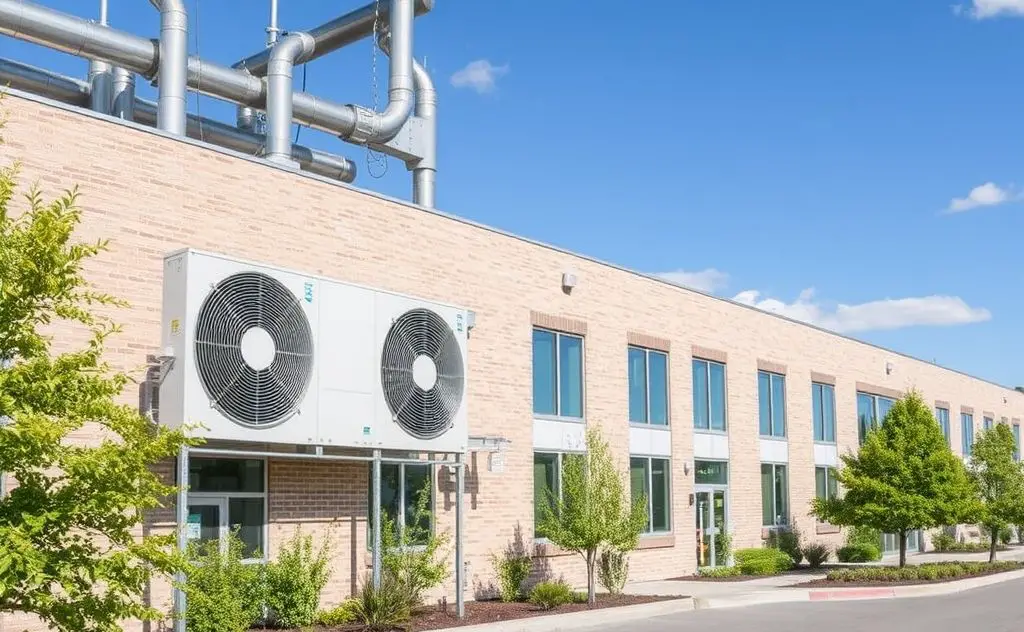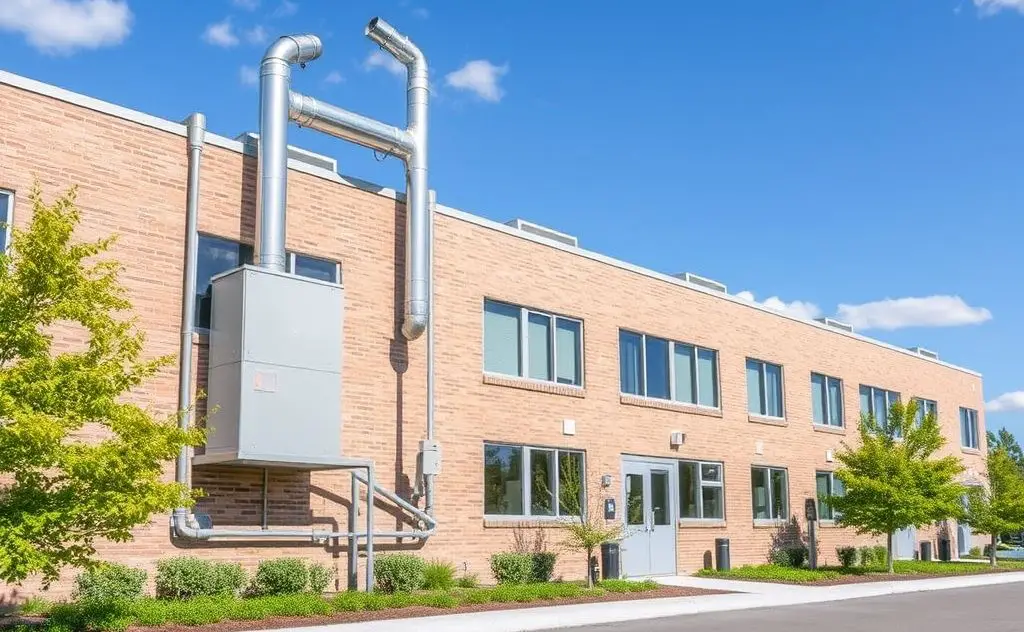The best HVAC system for commercial buildings is typically a Variable Refrigerant Flow (VRF) system, offering energy efficiency and flexibility for diverse spaces.
Choosing the right HVAC system for your commercial building impacts energy costs, occupant comfort, and maintenance requirements. With multiple technologies available, selecting the optimal solution requires understanding key differences in performance, scalability, and operating costs.

5 Top Commercial HVAC Systems Compared
Modern commercial buildings typically use one of these five HVAC configurations:
1. Variable Air Volume (VAV) Systems
VAV systems adjust airflow to different zones based on real-time temperature demands. They’re the most efficient choice for:
- Office buildings over 20,000 sq ft
- Buildings with multiple temperature zones
- Properties prioritizing energy savings
Example: A 30-story office tower in Chicago reduced energy costs by 28% after upgrading to VAV with smart thermostat controls.
2. Chilled Water Systems
These large-scale systems use water as a cooling medium:
| Type | Best For | Efficiency |
|---|---|---|
| Water-Cooled | Buildings over 100,000 sq ft | 0.5-0.6 kW/ton |
| Air-Cooled | Mid-size buildings | 1.0-1.2 kW/ton |
3. Variable Refrigerant Flow (VRF)
VRF systems provide precise temperature control through refrigerant lines. Key benefits:
- 30-40% more efficient than traditional systems
- Simultaneous heating/cooling in different zones
- Quiet operation (as low as 19 dB)
4. Rooftop Units (RTUs)
These all-in-one systems are common in:
- Retail stores
- Restaurants
- Small office buildings
Modern RTUs now achieve up to 16 SEER ratings with advanced gas heating options.
5. Packaged Terminal AC (PTAC)
Common in hotels and multi-tenant buildings, PTACs offer:
- Individual room control
- Easy maintenance
- Lower upfront costs

Key Selection Factors
Consider these critical aspects when choosing your commercial HVAC system:
Building Size and Layout
Open floor plans work well with VAV systems, while multi-room buildings often benefit from VRF technology. According to ASHRAE, buildings under 25,000 sq ft typically see better ROI with packaged systems.
Climate Conditions
Extreme climates require systems with:
- Heat pumps for temperatures below freezing
- Desiccant dehumidifiers for humid regions
- High-efficiency chillers for hot climates
Energy Efficiency Goals
LEED-certified buildings often use:
- Geothermal heat pumps (500% efficiency)
- Solar-assisted HVAC
- Thermal energy storage
Emerging HVAC Technologies
Innovations changing commercial HVAC include:
Magnetic Bearing Chillers
These frictionless systems achieve:
- 0.3 kW/ton efficiency
- 50% less maintenance
- 25-year lifespan
Smart HVAC Controls
AI-powered systems from companies like Honeywell can:
- Predict maintenance needs
- Automatically adjust settings
- Integrate with building automation
Dual-Fuel Systems
These hybrid systems combine:
- Electric heat pumps
- Gas-fired backup
- Automatic fuel switching
According to DOE studies, dual-fuel systems reduce operating costs by 18-22% in temperate climates.
Maintenance Considerations
Proper upkeep varies by system type:
VAV Maintenance
Requires quarterly:
- Damper inspections
- Sensor calibrations
- Duct cleaning
Chilled Water Systems
Need annual:
- Chemical treatments
- Tower cleanings
- Pump rebuilds
VRF Maintenance
Simpler than traditional systems but requires:
- Refrigerant monitoring
- Condenser coil cleaning
- Electrical inspections

